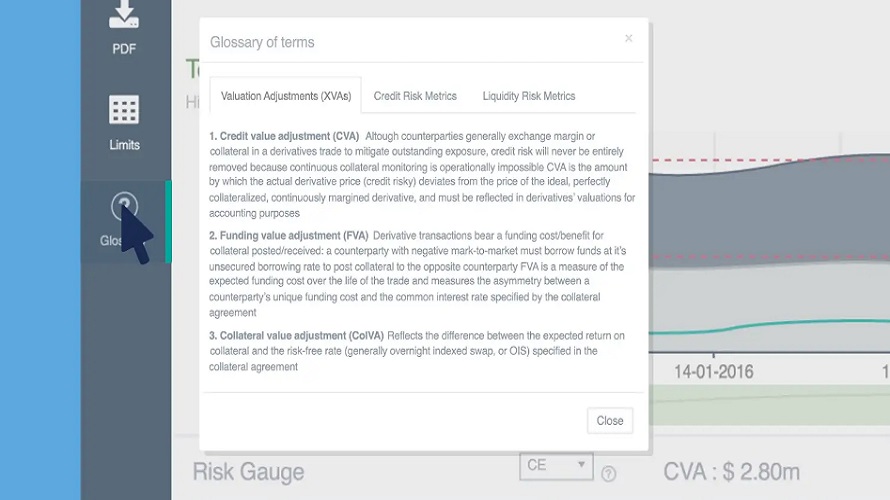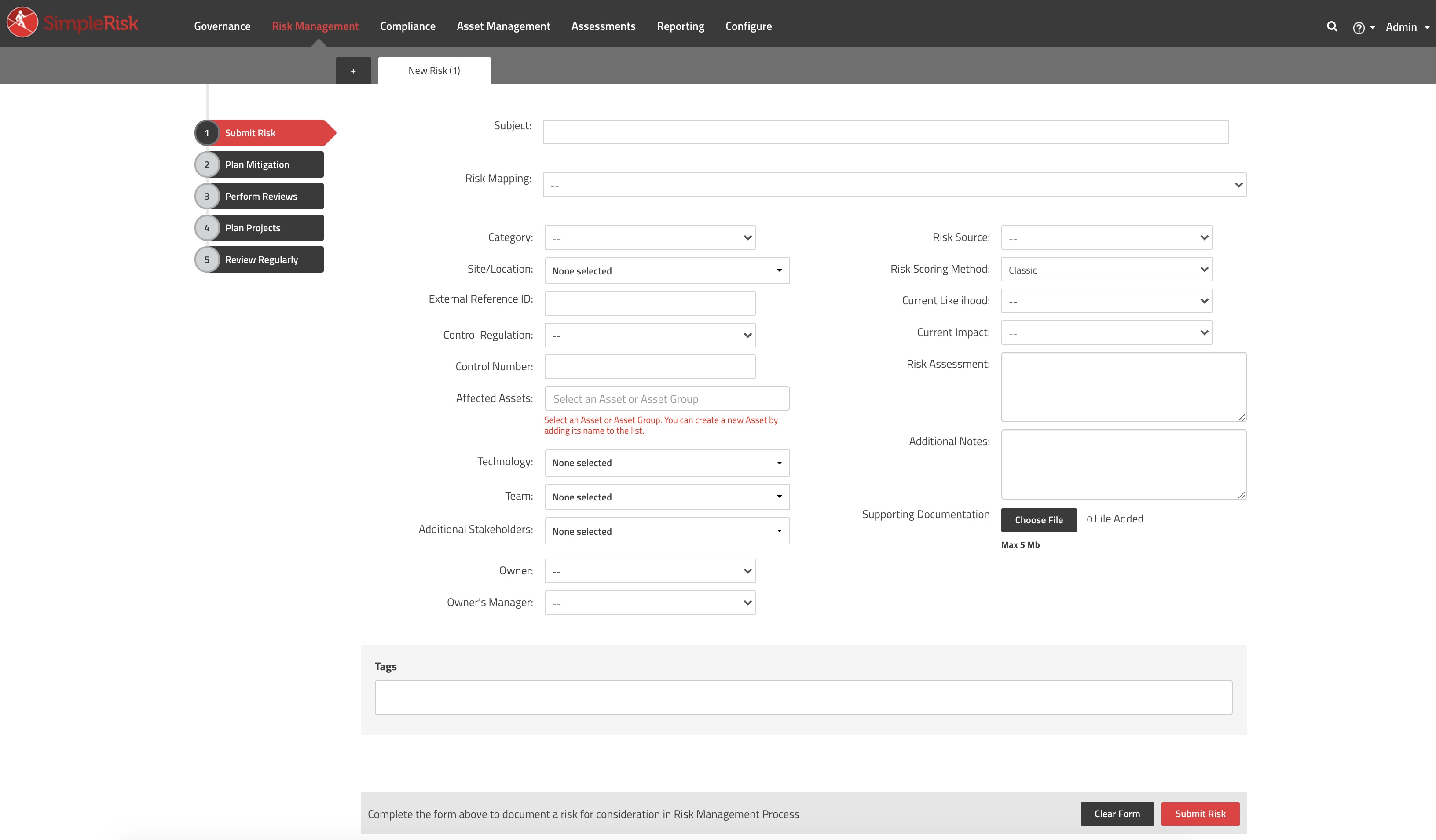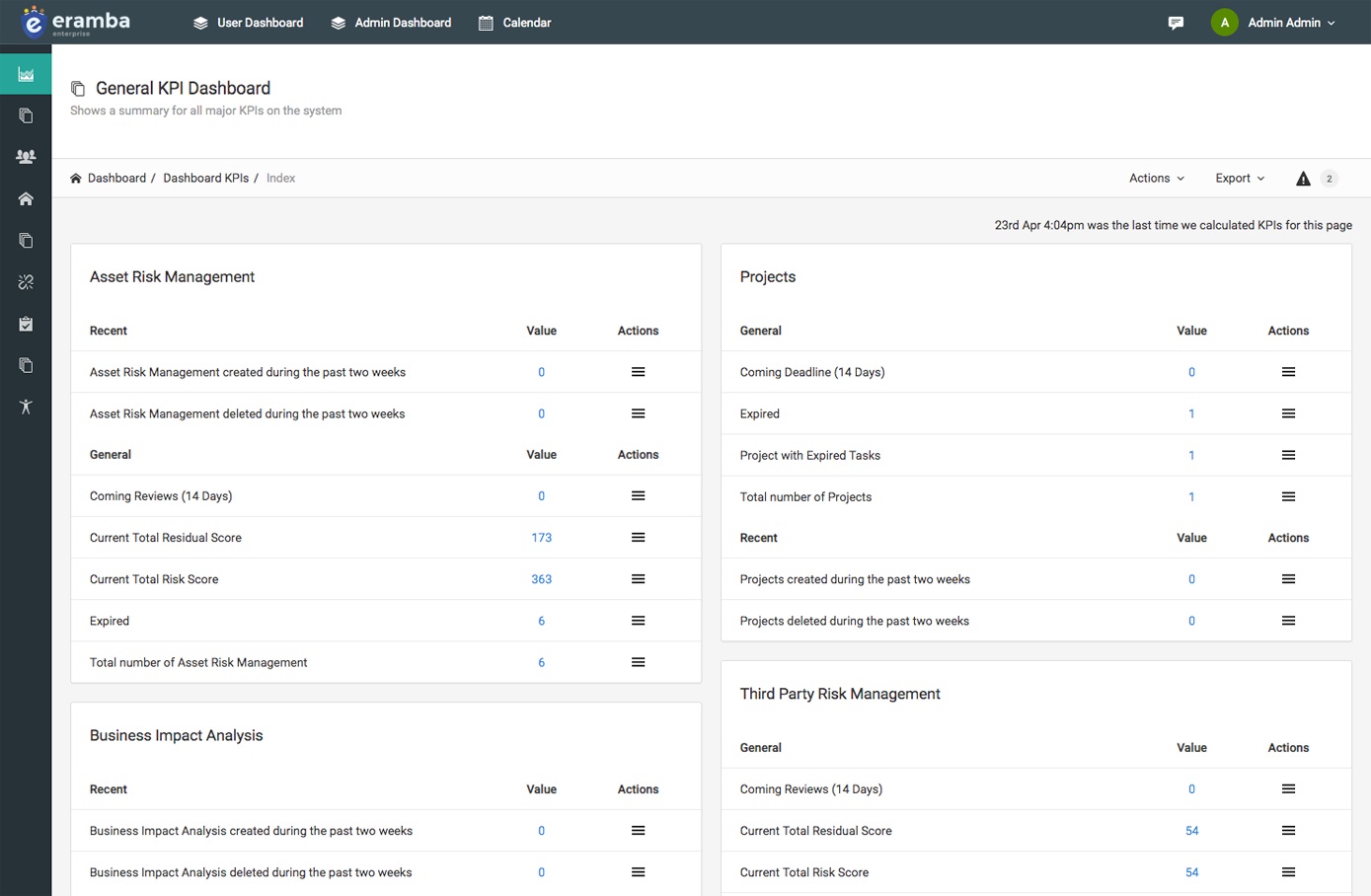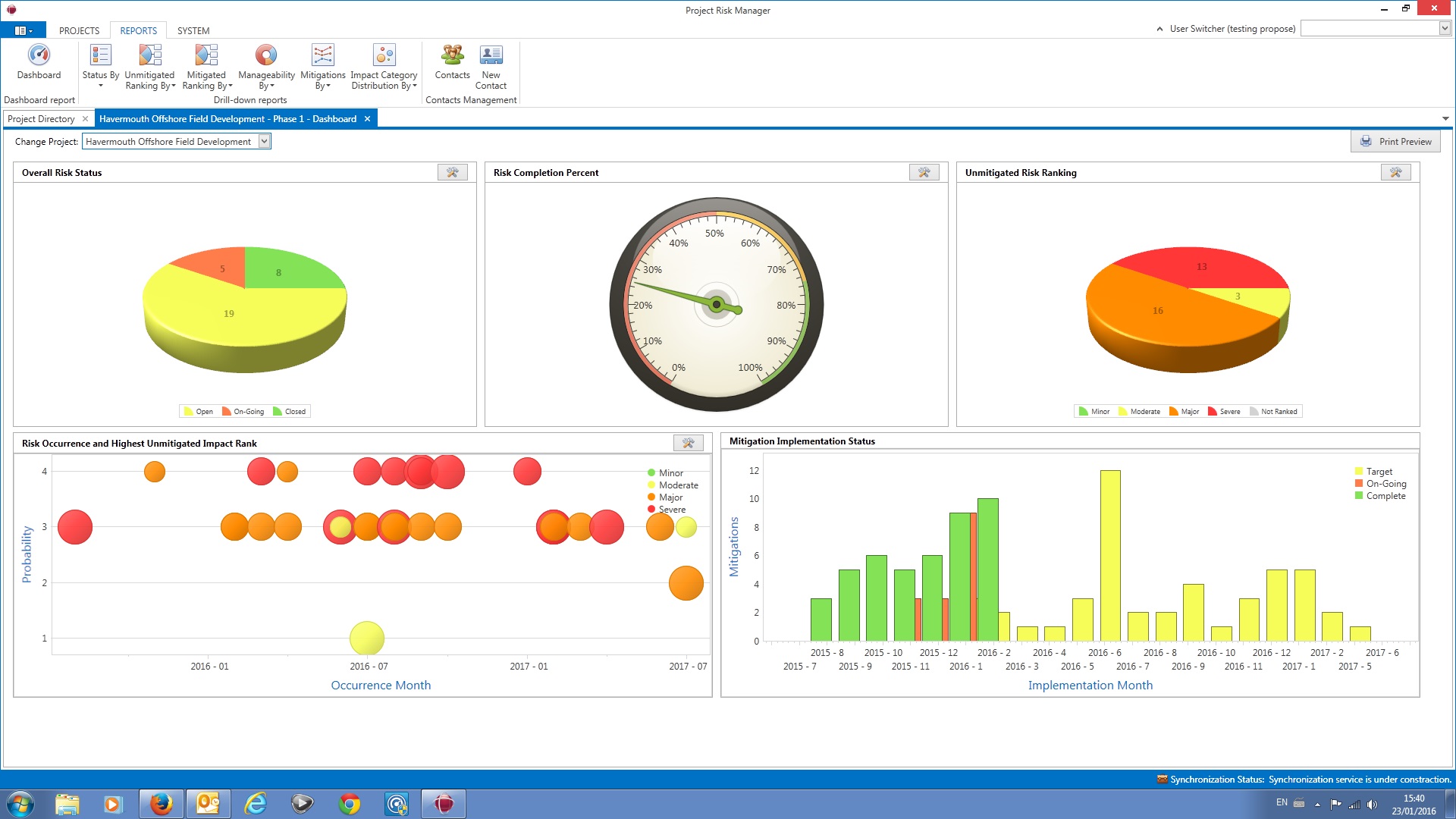Risk management has become an important challenge for companies. Most organizations struggle to assess and control the risk, especially when the risk factor is pretty uncertain. Although it is a fact that Firms cannot reduce uncertainty to zero, but they can commit to using technologies to be able to predict and control the impact.
Enterprise Risk Management is a concern as it has a huge impact on the organization’s long term success. There are several challenges that businesses face while dealing with risks as given below -

Integrating the best risk management software in your business processes can help in overcoming these challenges to a great extent as it enables you to predict, identify, measure, and ultimately avoid risks that can harm your business profitability and reputation both.
This article would emphasize on what risk management software is exactly and why businesses need to deploy one. We will also focus on the features to look for while selecting a risk management solution for your business organization. Finally, we will dive into the in-depth details of the 7 best free and open source risk management software that would help you pick one that is just right for your business needs.
What Is Risk Management Software?
Risk management software is a tool that helps organizations in identifying the risks that are associated with their assets, resources, and information. The risk management system measures and monitors the risks and notifies/alerts you about them. It helps identify and avoid these risks before they harm the organization and ensure that all its processes are running seamlessly.
In the context of business objectives and goals, a risk management application can perform a set of functions like -

To carry out these activities effectively; a risk management software follows a systematic process as given below -
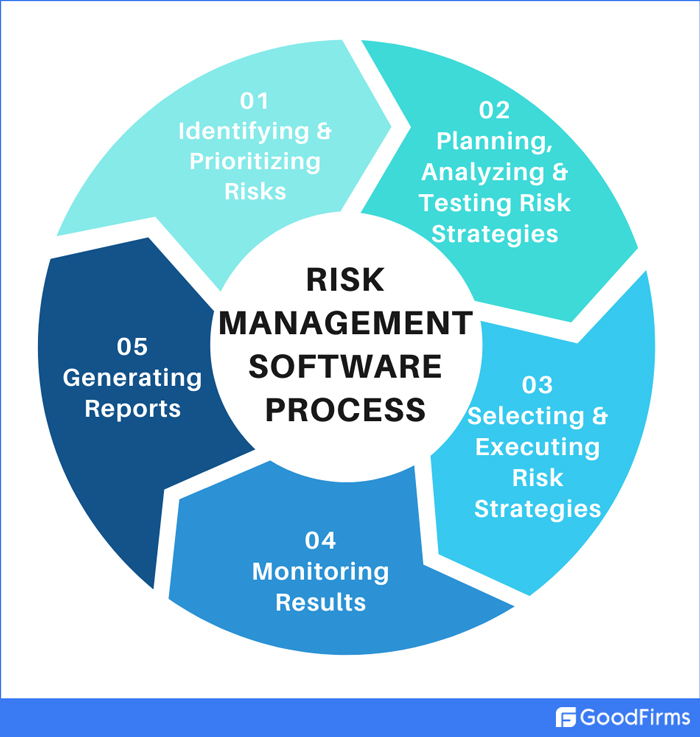
The functionality and process of risk management application say a lot about how it helps businesses operate smoothly and securely. Identifying and monitoring the risks critical to your business would help you overcome any potential setbacks and problems.
As per the recent survey, the risk management experts from 102 countries have quoted the below-mentioned major risks to Global Businesses in 2020 -
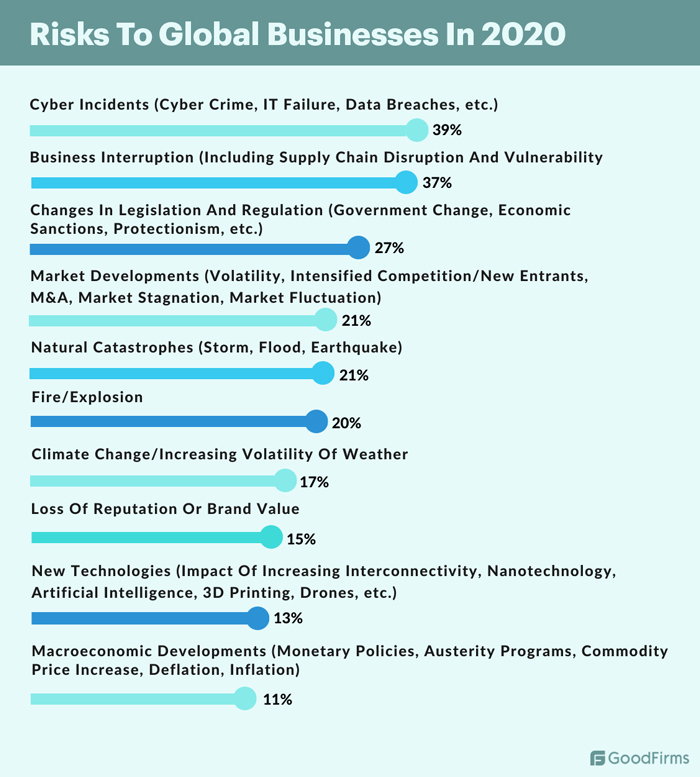
With so many risks that can impact your business adversely, it becomes highly significant to deploy the best risk management software. The Below-mentioned are some benefits that clearly justify this fact.

So, now you would agree to the fact that deploying a risk management software is extremely important. But, what features should you look for in your risk management software to leverage its maximum benefits? To get the answer to this question, it is necessary to understand the difference between risk and compliance management.
Difference Between Risk Management and Compliance Management
Risk Management
Risk management refers to the process that is followed to avoid internal and external factors that can harm a business. It requires to deal with uncertainties and inadequate management due to which the risk arises and harms the company’s financial performance and reputation. Technology integrated with skills can help in forecasting, measuring, reporting, and taking prompt action help in managing risks effectively and provide long-term benefits to the business.
Compliance Management
Compliance management refers to abiding to certain guidelines & laws set by the local Government bodies. It can also be understood as following a set of procedures and ethical values laid out by the company’s high authorities. The organization can face legal problems if it fails to comply with these rules and procedures. Compliance management process enables the company to nurture a good relation with the investors, customers, suppliers, and stakeholders and also maintain a good reputation in the market.
What Is The Difference?
Explaining the difference between risk management and compliance management can be tricky, as both the processes aim to save the organization from risks by complying with the policies. The only difference is that the risk management focuses on executing the business processes effectively so that risks can be avoided. Whereas, compliance management focuses on saving the organization from legal complexities and battles. The companies that combine risk management and compliance management can not only avoid risk but also create a tangible value for their business.
So, before you select a risk management software, make sure that it includes features relevant to risk management and compliance management both. Besides that, below-mentioned are some must-have features of a risk management solution that you need to consider -
Must-Have Features of Risk Management Software
Diagnosing Risks
The risk management software you choose should help you discover the risks that include any financial threats, legal problems, or any other external factor negatively impacting your business. Diagnosing risks is the first and most important risk management step because you cannot solve them without knowing the problems.
Risk Prioritization
Which risks do you think should be attended to first? The risk management software that allows assessing and scoring the risks can give answers to this question. Risk prioritization feature in a risk management software would allow you to address the right issue at the right time.
Alerts/Notifications
The risk management software you select should allow you to configure alerts so that you receive notifications in case of any emergency, critical event, or failure of any mission. This would help you stay informed about the risk management processes running within your organization and act on them promptly in case of any obstacles or glitches.
Compliance Management
Adhering to local government rules and regulations is very important to keep the business away from legal problems. The risk management software should ensure that all the business processes running within the organization meet the industry compliance requirements and standards.
Document Management
The risk management software you choose should enable you to build a repository of documents allowing easy knowledge sharing within the organization's employees. This would help maintain transparency and enhance collaboration within the team members while addressing the critical issues and managing risks. Also, it would help your new employees to understand your risk management processes easily.
Auditing
Auditing is required to ensure that the organization's risk management processes are effective enough to prevent or minimize losses. Auditing features in risk management software would help you track the status of the risks and the effective measures taken to avoid those risks to ensure accurate results.
Dashboard
The risk management software you choose should include a dashboard that allows you to view key risk indicators (KRIs), helping you to identify the risks at a glance and monitor the effects of your risk management efforts. This would help you analyze the current risk factors and forecast future risks easily, and make informed decisions.
Reporting
Finally, reporting is one of the most important features that your risk management software should possess. The risk management software you select should allow you to generate customized reports as per your preferences. These reports can be very useful while making critical decisions and informing your business stakeholders about the predicted risks and measures taken against those risks.
Besides the above-mentioned important features, you also need to ensure that your risk management software is user-friendly, secure, and scalable enough to grow with your business so that you can gain maximum long-term benefits out of it. Here, we have included the best 7 free and open source risk management software list. The major advantage of choosing free and open source risk management software is that you can customize it as per your business needs and deploy it without investing a huge amount.
The Best 7 Free and Open Source Risk Management Software
#1 Open Source Risk Engine (Free and Open Source)
Open Source Risk Engine (ORE) is a free and open source risk management software based on QuantLib and provided under the Modified BSD License. You can easily customize the code and use it as standalone software or integrate it with a commercially licensed software. It is a versatile risk management solution that includes some advanced features that allow you to manage risks effectively and save your business from financial disasters. Being an open source risk management software, it is absolutely free to download but you may need to pay your technical team for customizing and deploying it to make it work as per your business logic.
Key Features
- Includes in-depth risk analytics features and value adjustments (XVAs)
- Provides interfaces for trade/market data and system configuration
- Includes easy to use application launchers in Excel, LibreOffice, Python, and Jupyter
- Provides comprehensive test suites that help in planning and implementing effective risk management strategies
- Includes different examples that demonstrate typical use cases for better understanding
#2 SimpleRisk (Free and Open Source)
SimpleRisk is a free and open source that includes Governance and risk management and compliance (GRC) capabilities, allowing you to avoid risks relating to the government's changing regulations or any financial issue. It was launched to help the companies manage their GRC program following a systematic approach that is error-free. It is free to download and easily customizable to suit your business preferences.
Key Features
- Allows uploading the documents relating to your organization's policies, guidelines, standards, etc., that can be linked to the defined risk management controls.
- Includes high-end configuration features that allow you to set up a risk management process as per your business preferences
- Includes the facility to submit new risks, monitor, and keep track of them consistently.
- Allows you to define unlimited tests across your organization to ensure risk-free workflows
- Includes asset management features that allow you to discover, monitor, value, and detect any risk associated with them
- Allows you to take up any pre-configured risk assessment test to identify any security and compliance-related risks
- Facilitates you to generate customized reports for analyzing the past and current situations and plan future strategies
#3 Eramba (Free and Open Source)
Eramba is a free and open source enterprise-level Governance, Risk, and Compliance (GRC solution) that is very simple to configure, customize, and use. It helps you with risk management, compliance, management, incident management, internal control testing, policy reviews, and online assessments. It helps in identifying the risks surrounding the organization and effectively addressing the issues. The community version of this software is 100% free but it also has an enterprise version that comes at a flat yearly fee charged for regular updates and support from the core team.
Key Features
- Allows registering internal controls, set notifications for deadlines, and store testing evidence
- Enables you to present your compliance status to auditors and stakeholders
- Keeps record of every financial and compliance issues for advanced protection
- Documents each data flow, their controls, policies, and people involved
- Records and manages incidents systematically
- Defines and follows up with projects that can improve your GRC program
- Allows you to send online assessment forms to your customers and suppliers and acquire their feedback
- Automates the process of reviewing the accounts of the users, their roles and permissions
#4 RA Risk Coverage (Free and Open Source)
RA Risk Coverage is a free and open source software developed by Kostadin Taneski, and A1 Telekom Austria is a system that allows you to calculate the extent to which financial risks have been covered. It helps professionals to collaborate and simultaneously discourages the misuse of intellectual property. This widely adopted software is easy to customize and free to download, allowing you to deploy a risk management software as per your business preferences with a minimum amount of investment.
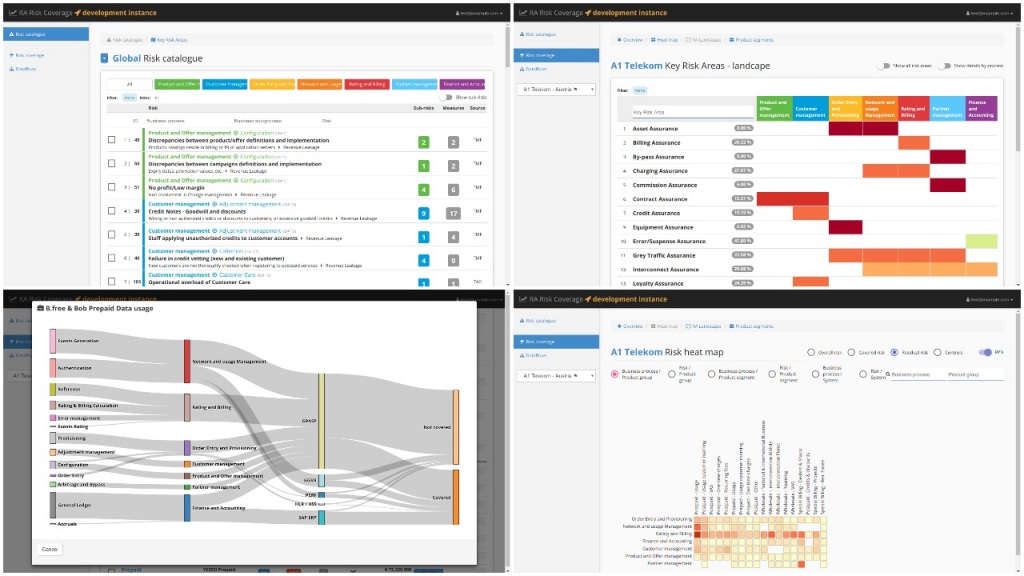 (riskandassurancegroup.org)
(riskandassurancegroup.org) Key Features
- Includes repository of interfaces, data sources, procedures, systems, and controls
- Provides complete information about the risks and its root causes, along with generic revenue assurance controls
- Enables you to define risk assessment methods based on the process and core system
- Facilitates you to set risk priorities and plan risk mitigation strategies
- Allows setting up alerts/notifications for the flawless risk management process
- Can generate customized reports for smart decision making
#5 PTA Professional (Free and Open Source)
PTA Professional is a free and open source risk management software that is developed with Practical Threat Analysis calculative technology. It helps you to build practical threat models and operate quantitative risk assessment of complex systems. It enables you to deal with operational and security risks. This software offers an easy method to sustain and overcome the changes in the system’s assets and vulnerabilities. It is absolutely free to download & install, and can be operated within minutes.

(ptatechnologies.com)
Key Features
- Includes a user-friendly interface for entering data that defines the assets, vulnerabilities, threats, etc
- Includes predefined security entity libraries
- Allows quantitative threat analysis
- Includes risk mitigation simulator tool enabling simulating the impact of the measures taken to avoid risks
- Allows storing threat models in a dynamic database
- Includes highly secure reporting and auditing subsystem
#6 OpenVAS (Free and Open Source)
OpenVAS is a free and open source risk management software that can scan vulnerabilities of the systems. Its capabilities include unauthenticated and authenticated testing, ensuring that high and low-level protocols within the organization are met. It also implements any vulnerability test using an internal programming language to ensure performance tuning for large-scale scans. This software was developed in 2009 by Greenbone Networks and was contributed as open source under the GNU General Public License and so is absolutely free to download and customize the code as per your business needs.
Key Features
- Allows you to find vulnerabilities in any internet-enabled system
- Provides customized detailed reports on risk assessment and mitigation
- Includes customized scan options that have network/server, WordPress, Joomla, and Web
- Provides access to 27 different vulnerability scanners and OSINT tools
- Allows you to set up alerts and notifications on detected changes and scheduled reports
- Includes reputational risk management features
#7 Project Risk Manager (Includes Paid Open Source Version and Free Cloud-Based Version for 5 Users Only)
Project Risk Manager is a versatile risk management tool that allows you to identify, evaluate, and mitigate each risk relating to the projects running within your organization. It allows planning, managing, and executing projects with maximum efficiency and minimum exposure to detrimental risk. This software's open source version is not free, but it has a cloud-based free version that allows only 5 users and includes limited features.
Key Features
- Allows deploying the software in multiple systems with an unlimited number of projects and users
- Includes role-based security features ensuring the safety of the confidential information stored
- Allows you to define logic based on which the risks are evaluated, and scored
- Provides access to public risk directory
- Allows you to set up automatic risk alerts and notifications
- Includes customizable parameters enabling you to define the process of the system as per your business logic
- Includes smart search and filters allowing you to access important information on your fingertips
- Generates detailed and customized reports pertaining to every risk element and project closure
After going through these free and open source risk management software details, you might be in a dilemma about which one would be the best option for your business. The below comparison chart can help you view the features of all these risk management software at a glance and ease your task of decision-making.
The Best 7 Free and Open Source Risk Management Software Comparison Chart

Besides these free and open source risk management software options we would also recommend you go through one of the most popular risk management software - Pentana Risk. It is not a free risk management software, but includes advanced features that can help you overcome several challenges and run your risk-free business effortlessly.
Pentana Risk (Enterprise Risk Management Software in the Cloud)
Pentana Risk by Ideagen is one of the most popular and well-featured Enterprise Risk Management (ERM) Software. It fully integrates with risk management processes starting from identifying business risks to implementing successful risk mitigation plans and reporting. It is a cloud-based risk management system that provides actionable insights about all the processes running with your organization and allows data-driven decision making, ensuring success in terms of profitability and Global expansion.
 (ideagen.com/products/pentana-risk)
(ideagen.com/products/pentana-risk)
Key Features
- Allows you to identify, analyze and evaluate business risks
- Consolidates all actions into streamlined milestones
- Provides the ability to set auto-reminders and track progress consistently
- Facilitates every employee to access their personal dashboard, informing them about their goals, target, overall score, and performance level
- Allows managing incidents proactively, including data capture, consolidated reporting, case management, etc
- Provides a 360-degree view of KPIs and visualize the performance of each business process on a real-time basis
The Key Takeaways
Implementing risk management policies and procedures has become critical for every business regardless of its type and size. Identifying risks and managing them manually without a systematic approach can be more disastrous. Also, with the growing business, the possibilities of uncertain risks that can ruin the organization's profitability and reputation also escalate. This is the reason why most businesses are switching to digital risk management methods to prevent risks, maintain resilience, and set new benchmarks.
But, before investing in one, ask yourself these questions -
- Does your business model affect when exposed to risk, if so, how?
- Do you require Risk management software for your business? If so, why?
- Can you rank and prioritize risks with the system that you identified?
- Can you ensure risks are reported effectively to the management and external stakeholders with this system?
- To what extent do you believe that risk and performance are linked, and do you see the risk management software to make the difference?
We hope this article has helped you select the best free and open source risk management software as per your business preferences. If budget is not a constraint for you, we would recommend you to go through the details of paid risk management software like LogicManager ERM, The CyberStrong Platform, Opture ERM, and many others mentioned in this comprehensive list of best risk management software.
If you have used any of the risk management software mentioned above, please leave your valuable feedback here. Also, browse all software categories if you are looking for emerging applications and tools for your multiple business processes.
